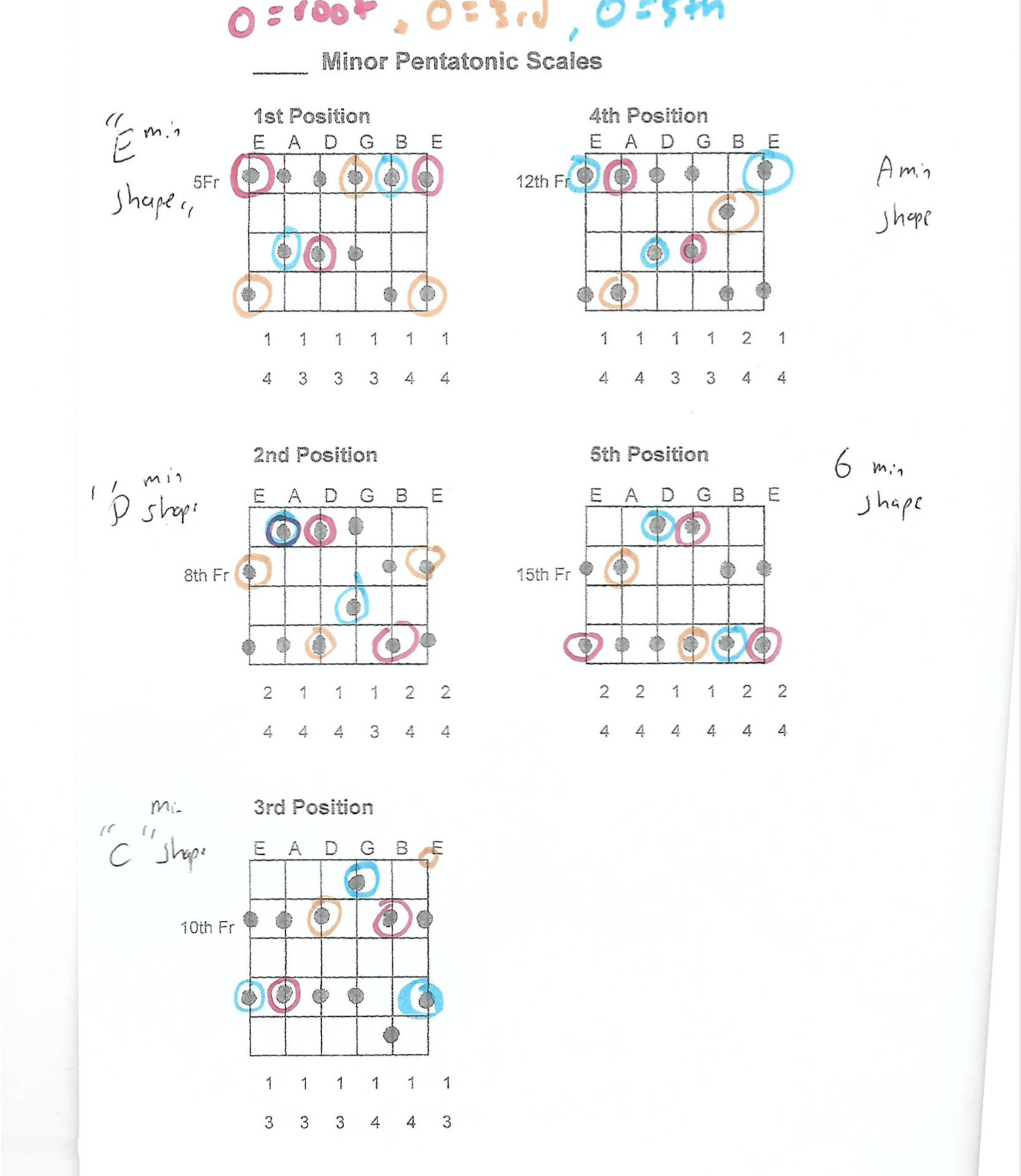Target Notes - Improving your guitar solo
One of the most common scenarios we see with guitar students is as follows: “I’ve been playing guitar for a few years, I picked up some songs and guitar soloing concepts from YouTube but now I have hit a plateau”. What I normally do with students who come to a lesson is first to jam with them on some sort of progression (likely a 12-bar blues). I will play some rhythm guitar and listen to them solo. After a few minutes I will stop and it’s time for some feedback. Here is what I typically notice upon first listen: The student has a decent technical ability (sure, improvements can always be made but I don’t get too hung up on that at first), they know how to play around the pentatonic scale in the first position (sometimes the second and third etc), but in general their ideas seem somewhat repetitive and meandering. What causes this you might ask? Lack of knowledge about target notes in the scale.
For our purposes I am going to be talking about an A minor Blues progression and the accompanying A minor pentatonic scale. If you are soloing over the 1 chord of the progression (the A minor chord in this case) then you have 3 target notes at your disposal. The A C and E notes. There are 5 notes in the A min pentatonic scale (or any pentatonic scale for that matter). These are A C D E and G. Most students simply play all of these notes and end on any of them at any given point. The problem is 2 of them do not match the tones of the chord (A C E as listed above). This leads to an instability in the resolution of the line and often has a sense of something being unfinished. So what do students do when they land on one of these unstable notes? They end up playing more notes and more notes until their solo sounds like a run on sentence.
What we need to do is identify what the target notes of the chords are and then practise resolving your guitar lines to them. This will allow some resolution to the end of each line and then promote more “space” in your soloing. That is why players like B.B. King or David Gilmour get away with so little in their solos… because they resolve their notes properly! I have attached a pic of the target notes in the pentatonic boxes 1 through 5. I would suggest creating a backing track or having a friend just play an A min chord (or whatever chord you choose - just make sure you pair it with the correct pentatonic scale ie: B min chord with a B minor pentatonic scale), and you practise choosing ONE and only target note to begin with and end your all of your lines on it. Think of it as a period at the end of a sentence. It will break up your soloing in a nice way and it won’t sound like a run on sentence. This will then allow you to utilize more space and you won’t feel like you are running out of ideas so quickly. I’ll come back to this concept next week and discuss how to target the rest of the notes in the blues progression but master the 1 chord first before moving to other chords in the progression.
